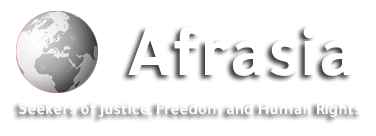
Afrasianet - Leila Nicolas : Professor of International Relations at the Lebanese University - Trump is making a clear plan to reduce dissent within his administration and improve his ability to impose his political agenda, as evidenced by the extensive purge of federal institutions.
Currents opposed to Donald Trump, whether Democrats or others, are preparing for mass demonstrations entitled "Day - No Kings", during the military parade that will be held on June 14, 2025, coinciding with the 250th anniversary of the founding of the US military. The military parade (which is rare in the United States) aims to show Donald Trump's "new monarchy" and turn the military's symbolism into a political tool used to intimidate opponents, perpetuate authoritarianism, and silence dissidents at home.
The United States is witnessing a wave of protests and breaches of security, following raids carried out by the Immigration and Customs Enforcement Service, targeting irregular migrants, especially in the city of Los Angeles in California.
Local authorities imposed curfews in a number of cities, and there were clashes between protesters and police. US President Donald Trump's administration has deployed National Guard and Marine Corps troops to Los Angeles, which California Governor Gavin Newsom has described as an authoritarian overreach and a violation of the state's sovereignty.
Legal framework for the dispute between Trump and the governor of California:
The legal framework governing this dispute are two interrelated but different laws: the Law of Rebellion (1807) and the Law of Posse Comitatus (1878).
The difference between the law of rebellion and the law of Posse Comitatus
It is important to note that there is a common confusion between the Insurrection Act and the Posse Comitatus Act, although they are separate laws and each performs a very different function in the American legal system.
The Insurgency Act, passed in 1807, allows the president to use federal armed forces within the United States in cases of insurrection or violence that impedes law enforcement, and can be enacted even without the consent of the state governor in specific circumstances.
In contrast, the Posse Comitatus Act of 1878 was designed to limit the use of the military in civilian affairs and serves as a protector of the principle of separation of powers and civil liberties, prohibiting federal forces, particularly the U.S. military, from participating in law enforcement within the country except under specific legal exceptions, such as those granted by the Insurgency Act.
Thus, the two laws are not incompatible in principle, but it is the use of one (the law of rebellion) that legally allows the restriction of the other to be bypassed (the law of Posé Comitatus).
Limits of Military Law: Posse-Komitatus Law
This law prohibits the use of the military to enforce laws within the United States. However, the president can bypass it by:
The law of rebellion.
Support for federal property protection, which Trump used to justify the deployment of the Marines.
The Insurgency Act provides that "when a State insurrects against its Government, the President may, at the request of its legislature or governor, if the Legislature is unable to convene, call forces from the militia of the other States into federal service, in such number as that State may require, and use such armed forces as it deems necessary to suppress the rebellion."
Fearing for the individual freedoms that Americans revere, the Posse-Kometatos Act prohibits federal military powers, in normal times, from participating in state civil law enforcement. Despite this prohibition, the "rebellion" law has been used 30 times since 1807, most notably:
The American Civil War by order of President Lincoln (1861-1865).
b. Protection of Black Students in Little Rock, Arkansas by order of President Eisenhower (1957).
c. Protecting the march of civil rights in Alabama by order of President Lyndon Johnson (1965).
d. Suppression of the riots in Los Angeles (1992) at the request of the Governor of the State.
President Trump threatened to use it in 2020 during the George Floyd protests, but he did not.
Currently, Trump has invoked Section 10 U.S.C. § 12406, which authorizes the president to deploy the National Guard (without the consent of the state governor) in cases of insurrection or inability to enforce laws with regular forces.
Politics is beyond the law
There is no doubt that these demonstrations reflect the sharp political polarization that characterizes American society, and the disagreement that has come beyond the traditional partisan division in the United States, where Trump is taking advantage of the overwhelming "red wave" that occurred in the last election, to concentrate power in his hands, fight his opponents and prevent them from repeating what they did during his first term.
Since his arrival in the White House, Trump has been making a clear plan to reduce objection within his administration, and to improve his ability to impose his political agenda, and this is shown not only by challenging state governors and deploying federal troops without their permission, but also in the extensive purge that took place in federal institutions, and in his clash with universities, most recently Harvard University, and what was published about the restructuring of the National Security Council, where National Security Adviser Mike Waltz was fired along with a number of members who do not agree Exactly with his agenda, including those who are among the most prominent supporters of Israel and Benjamin Netanyahu.
On the other hand, the Democrats and the globalization movement, supported by wings of the "deep state" and those affected by Trump's policies, are moving in an attempt to obstruct this trend and prevent him from fully implementing his agenda, repeating what they were able to do during his first term when they flooded him with legal lawsuits, demonstrations and accusations of dealing with Russia and others, so that they handcuffed him and prevented him from achieving his agenda in foreign and domestic policy.
As a result, the demonstrations that began in California are more than just protests against immigration, but rather an indication of an internal clash over the shape of the American system itself: it is the tip of the iceberg in a struggle of wings within the deep state, and a conflict between Trump and the current of globalization, which takes the headline: "The conflict between Trumpian authoritarianism on the one hand, and pluralism, freedoms and separation of powers on the other," but in fact it is a much deeper conflict.

